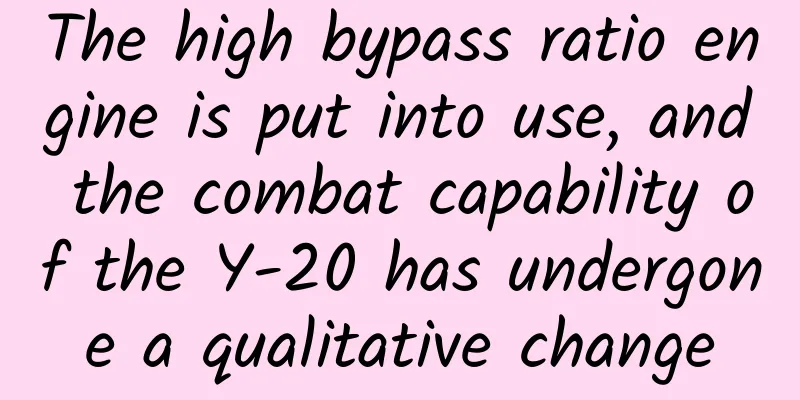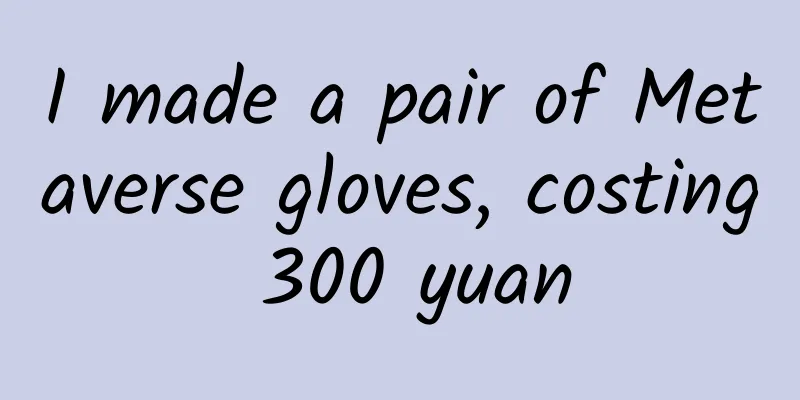Magical things born from simplicity: Uncovering the origin of bioelectricity

|
Produced by: Science Popularization China Author: Otto Starlight Producer: China Science Expo If there is a knowledge related to physics, chemistry, biology, and information, what would you think of? Some of you may give the answer of bioelectricity, which is mainly nerve impulses. Others may ask, nerves can also be impulsive? Don't worry, this "impulse" is not that impulse. The electrical impulse signal in the nerve is not like the electron transmission in the metal conductor. If the nerve is compared to a wire, the nerve itself, as an organic tissue, has poor conductivity. And because the nerve is immersed in body fluid with poor insulation, the impedance effect will cause the signal of the nerve in the wire to decay continuously. At this time, the nerve is like a wire with poor conductivity and leakage everywhere. Scientists have long been exploring the mechanism of electrical impulses in nerves, and its secret is surprisingly simple and magical. Frog Experiment - The First Discovery of Bioelectricity As early as the 18th century, Galvani discovered the existence of bioelectricity through his famous frog experiment, in which he observed that metals caused frogs' legs to spasm. This discovery later inspired Volt to invent the battery and promoted the development of electricity itself. However, this discovery had little impact on the study of how nerves transmit electrical signals. It was not until 1871 that American physiologist Bowditch proposed the all-or-none law of nerves, which states that stimulation of nerves must reach a certain threshold to cause nerve impulses. In 1913, Adrian recorded nerve impulses by measuring electrical signals on a single nerve and found that nerve impulses could reach the brain, which would then re-send new nerve impulses to control muscle contraction. However, the research of the above scientists still does not explain how electric current is conducted in nerves. Galvani's frog experiment (Image source: Wikipedia) How electrical signals are transmitted in nerves It is generally believed that there are many ions in body fluids. Could these be the carriers of electrical impulses in nerves? A century ago, German physiologist Bernstein first thought that the charged particles responsible for bioelectricity were not electrons but positively charged ions, and confirmed that nerve impulses occurred on the cell membrane, which could quickly make the cell membrane reach a new equilibrium state without transmembrane potential. Bernstein's hypothesis explained the sign and magnitude of the resting potential, as well as the depolarization observed during nerve impulses (when the membrane potential goes to zero), but the details of the process of nerve impulses had to wait until two people came along: Hodgking and Huxley. The chemical mechanism of nerve impulses Hawking and Huxley conducted exploratory experiments in the 1930s to try to explain the chemical mechanism of nerve impulses. They inserted tiny glass capillary electrodes into the giant axons of squids to measure the changes in electrical potential of nerve impulses and discovered the phenomenon of polarity reversal (the membrane potential briefly changed its sign). They then discovered that this peak potential was similar to the Nernst potential of sodium ions. This expanded Bernstein's idea of selective permeability - the surface cell membrane can quickly change from being selectively permeable to potassium ions to being permeable to sodium ions. However, when the research finally reached the exciting moment of revealing the mystery, World War II broke out. Since this research was non-military science, it was put on hold for several years. Until 1946, Hawking and Katz continued their research and demonstrated in detail that as the sodium ion concentration of the axon's external solution decreased, the peak potential would indeed decrease until it reached zero; and vice versa, the peak potential would increase. In later studies, Hawking and Huxley proposed the voltage-gating hypothesis: the depolarization of the nerve cell membrane is the cause of the change in sodium ion permeability and the increase in membrane conductivity. They believed that there were some unknown molecular machines on the membrane that allowed sodium ions to move across the membrane with a conductivity that depended on the membrane potential. This view suggests that the movement of sodium ions across the membrane is a positive feedback process, that is, depolarization turns on the molecular machines that pass sodium ions, which in turn promotes the depolarization process, thereby turning on more molecular machines, and the two cycles back and forth. This explains the transmission process of nerve impulses. How nerve impulses are transmitted (animated image) (Image source: Wikipedia) In the following experiments, Hawking, Huxley and Katz used three newly developed techniques (space clamp, voltage clamp, and ion flow separation) to carry out a series of sophisticated experiments to confirm the existence of a potential-dependent and ion-selective conductance. In the era before the advent of computers, they used a hand-cranked computer and spent nearly a month to reconstruct the calculation of a nerve electrical impulse. The results obtained perfectly reproduced the temporal characteristics of the action potential, the propagation rate, and its dependence on changes in the concentration of ions outside the membrane. However, in essence, the action potential theory revealed by the Hawking-Huxley model is only a phenomenological theory. They can use the macroscopic results and physical parameters of a large number of ions measured to explain the action potential, but they cannot explain the inherent chemical mechanism, that is, how the molecular machines on the nerve membrane transport sodium and potassium ions of different sizes. Molecular Biological Basis of Nerve Impulses A deeper understanding required the development of molecular biology and electronic devices. The real breakthrough had to wait until 1975, when Neher and Sakmanan developed the necessary electronics and the patch clamp technique, which made it possible to measure the current flowing through individual molecular machines, called ion channels, in the membranes of living cells. The observation results of the microstructure of ion channels show the specificity and conduction mechanism of ion channels. In 1998, Mackinnon et al. obtained the crystal structure of potassium ion channel for the first time and found that its size was completely consistent with the size of potassium ions. Its structure also shows that changes in nerve membrane potential will cause large-scale conformational changes in ion channel proteins, leading to the opening of ion channels, which also reveals the specific process of nerve impulse transmission. Only then did people fully reveal the physical laws, chemical mechanisms and molecular biological basis of bioelectricity. Schematic diagram of sodium and potassium ion channels (Image source: Wikipedia) Application of human bioelectricity The application of bioelectricity is of course very extensive and has unlimited prospects. Long before the chemical mechanism of bioelectricity was discovered, hospitals were already using electrocardiograms to check patients' heart problems. Due to its safety and ease of operation, hospitals now often use electroacupuncture therapy to replace traditional acupuncture. The currently popular brain-computer interface has become a cutting-edge interdisciplinary subject. It is not only expected to play a huge role in the medical field and repair the physical and mental trauma of patients, but it will also play an unexpected role in various fields and scenarios. It is also the key to realizing our interaction and even symbiosis with machines. Musk and his Neuralink (Photo source: New Wisdom) Conclusion The study of bioelectricity spans two hundred years. It is a model of multidisciplinary research that uses physical and chemical methods to study biological problems and reveal the information transmission mechanism in organisms. It also shows the role of technology in promoting scientific understanding. How big is the impact of bioelectricity? From the various feelings you have formed, the various movements you have performed, to the thinking behaviors of agreeing or questioning as you read this article at this moment, they are all related to the electrical pulses generated by the sodium and potassium ions that are being transported rapidly in your body. Nature uses this ingenious way to construct the transmission of information within organisms. Although it is very simple, it effectively creates complexity and magic, and brings unlimited possibilities for the future of mankind. References: [1] Philip Nelson, Biophysics: Energy, Information, Life, 2006 【2】John Brockman, Why the World Works So Gracefully and Beautifully, 2017 |
<<: The deadly toxin "fumonisin" in cold noodles, in what other foods is it hidden?
>>: Sea otters are stealing surfboards, and now they're being hunted across the ocean
Recommend
Practical strategies and methods for Tik Tok content operation and promotion!
The "2018 Douyin Big Data Report" relea...
Wave power: a treasure of marine resources
Wave power generation is a clean and efficient po...
The price has increased 6 times in two years. Can creative mid-roll ads replace traditional advertising positions?
"The busiest time is yet to come." As t...
Millions of dollars were stolen from Pinduoduo. What is the trick behind the coupons?
The e-commerce "Internet celebrity" Pin...
Why is the high-speed rail so fast? What is the source of its power?
As a convenient means of transportation in today&...
Blue Moon lander unveiled, when will it fly to the moon?
Recently, NASA Administrator Nelson visited Blue ...
LeTV O2O case analysis: How does “buy a TV and get high-end kitchenware for free” work?
When LeEco's senior executives and its partne...
What are the advantages of the Webb telescope? The near-term mission has been determined. Will there be any shocking discoveries?
The Hubble Space Telescope (hereinafter referred ...
Is the "magic medicine" for hepatitis A really what was exchanged for the color TV ticket in "Fanhua"?
This is the 4875th article of Da Yi Xiao Hu There...
How much does it cost to customize a meat and poultry mini program in Guilin?
How much does it cost to customize the Guilin mea...
What does “February 2, the dragon raises its head” mean?
Appointment with the Starry Sky | What does “Febr...
Apple releases iOS16 Beta 2! Let's take a look at what's updated
Apple recently pushed the iOS/iPadOS 16 Developer...
U.S. sales fell in the first four months, and automakers will stop production and reduce inventory
According to foreign media reports, American auto...
My experience with the lightweight version of Find7
I just got find 7, let me say something. 1: Regard...
How to select images for information flow ads? Are there any tips?
As the title says, today we are going to introduc...









